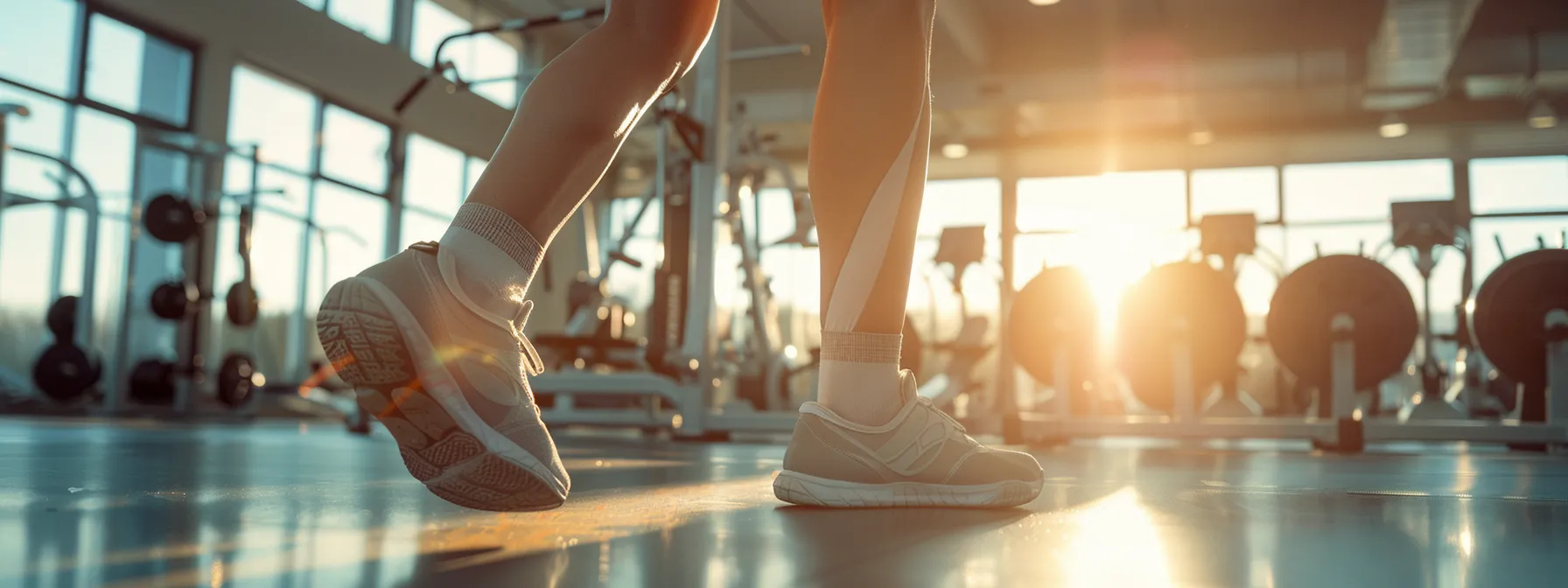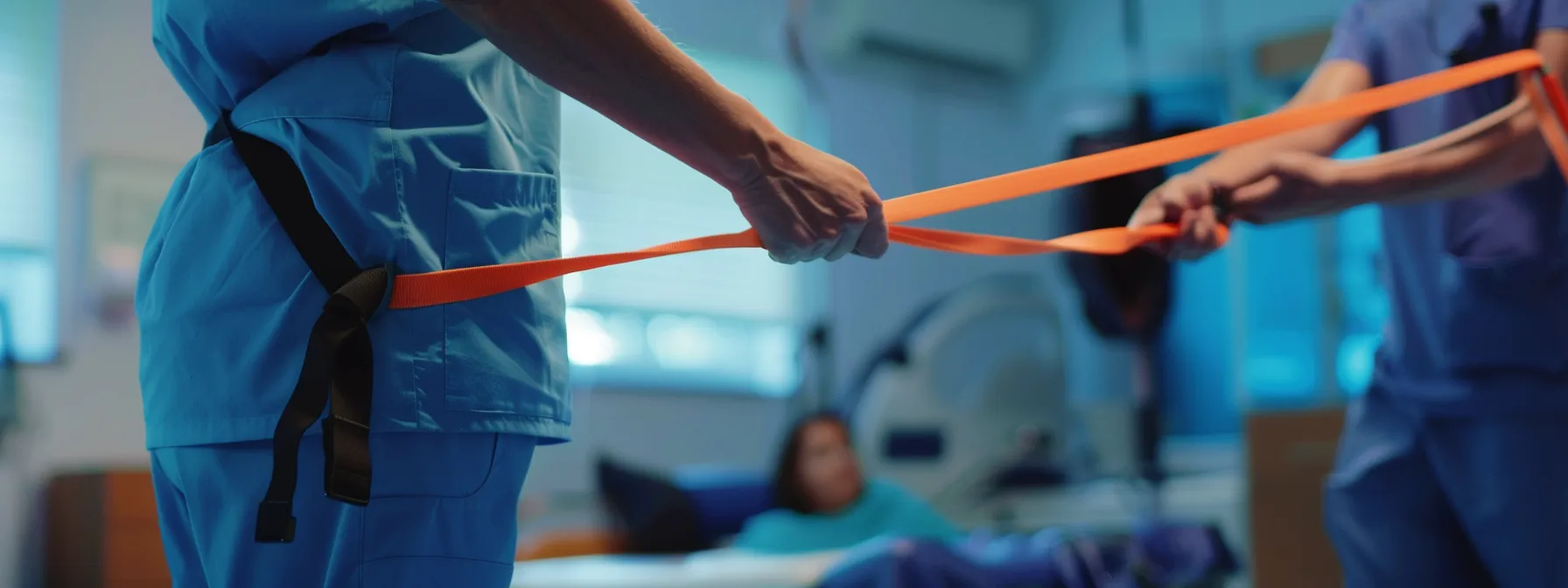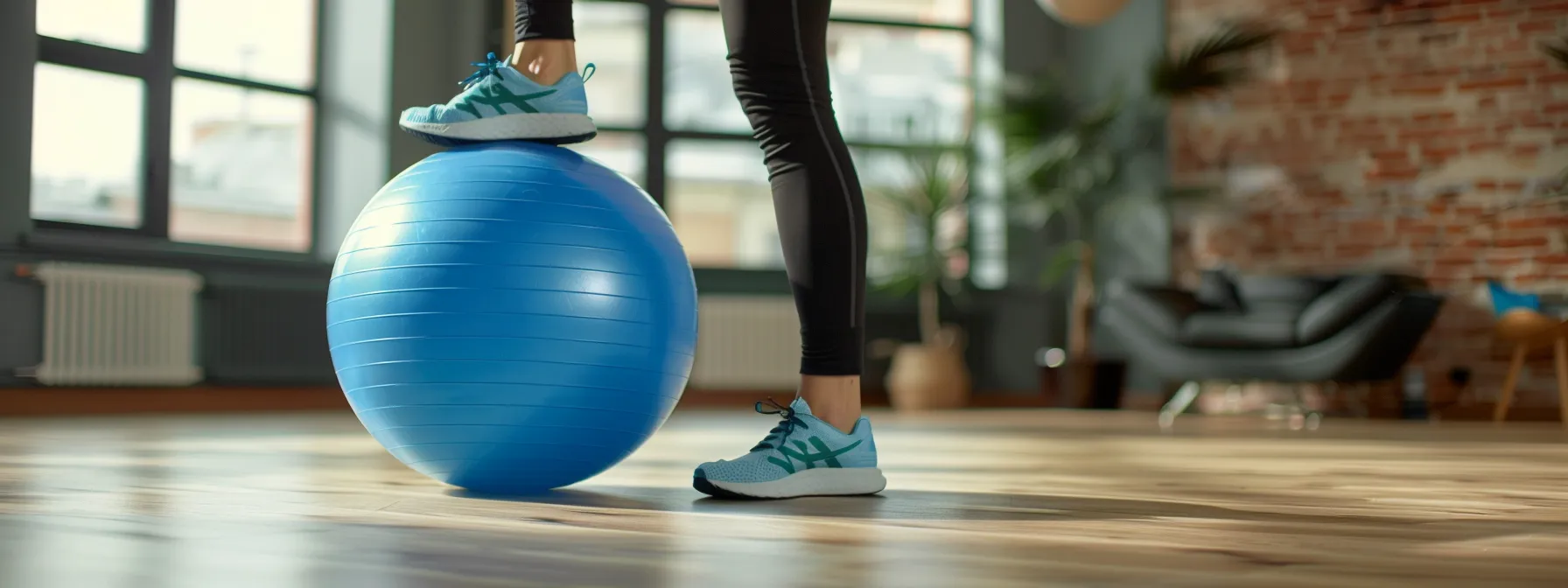Complete Guide to Rehabilitation Exercises for Knee Injury Recovery
Knee injuries can feel overwhelming, especially when the road to recovery seems long and uncertain. This complete guide to rehabilitation exercises for knee injury recovery will help you navigate that journey with confidence. We’ll explore essential exercises focused on strengthening, flexibility, and balance, including techniques like water aerobics that enhance your range of motion. By engaging with this content, you'll learn how to develop a practical rehabilitation plan tailored to your needs, ultimately easing your discomfort and improving your mobility after procedures like arthroscopy. Let's take the steps together toward a successful recovery.
Key Takeaways
- Setting realistic recovery goals enhances motivation and helps track progress effectively
- Engaging in targeted rehabilitation exercises improves strength and reduces recovery time
- Incorporating gentle stretches supports flexibility and alleviates stiffness during rehabilitation
- Proprioception training is vital to prevent re-injury and improve knee stability
- Active communication with healthcare professionals ensures tailored rehabilitation and better outcomes
Understanding Knee Injuries and Recovery Process

Common knee injuries, such as ligament tears or meniscus injuries, can significantly impact your mobility and daily life. Understanding the role of rehabilitation in your recovery is vital—it's not just about healing, but also about regaining strength and function. I encourage setting realistic recovery goals, as this helps ensure you stay motivated and focused on your progress throughout the journey. In the following sections, I will cover detailed rehab exercises from Keep It Kinetic Chiropractic, necessary angles for effective training, and how to engage your abdomen and hand to support knee stability.
Common Knee Injuries and Their Impact
Knee injuries, such as anterior cruciate ligament (ACL) tears or cartilage damage, can profoundly affect your daily activities and overall mobility. As someone who has guided many through similar challenges, I have seen how these injuries can lead to pain, instability, and a decreased ability to engage in activities such as aerobics or even simple walking. It's essential to recognize that understanding the specifics of your injury will empower you in your recovery journey. Contact Us
Furthermore, the recovery process often includes crucial steps like warming up before any activity, which can significantly enhance your rehabilitation experience. Incorporating targeted exercises not only helps rebuild strength but also improves function in the knee joint, fostering better overall mobility. I encourage focusing on the rehabilitation process with patience and determination, as each step taken can lead to better outcomes and a return to the activities you enjoy. Contact Us for more information.
Importance of Rehabilitation in Healing
Rehabilitation plays a crucial role in healing from knee injuries, especially after incidents like an ACL tear. Research shows that engaging in targeted rehabilitation exercises for knee injuries can significantly improve recovery outcomes. In my experience, a well-structured program that incorporates strengthening exercises for the gluteus maximus not only enhances knee stability but also supports overall mobility. As you progress, simple activities, like practicing going up and down stairs, can be vital indicators of your recovery. Feel free to Contact Us for more information on the Conditions We Treat.
Additionally, rehabilitation exercises are essential for restoring strength and function to the knee joint. These exercises promote blood flow and help in healing the injured tissues. I’ve seen how committed effort during ACL tear physiotherapy treatment can greatly reduce recovery time. Focusing on specific movements has helped my patients regain confidence in their mobility, guiding them back to their daily activities with renewed strength and stability.
- Importance of rehabilitation in the healing process
- Targeted rehabilitation exercises improve recovery outcomes
- Strengthening gluteus maximus aids knee stability
- Practicing stairs showcases recovery progress
- ACL tear physiotherapy treatment accelerates healing
- Restoring strength and function with dedicated exercises
Setting Realistic Recovery Goals
Setting realistic recovery goals is crucial in your knee rehabilitation journey, especially when dealing with injuries like patellar tendon issues. I recommend breaking down the recovery process into manageable steps. For example, focusing on regaining strength in your thigh and hip muscles can help alleviate fatigue in your knee, providing a solid foundation for effective rehabilitation. By establishing clear, achievable milestones, you can maintain motivation and celebrate small successes along the way.
Reflecting on my experience with patients, I find that having specific goals—such as increasing range of motion or completing a certain number of reps in exercises—helps create a roadmap for recovery. Listening to your body is essential; if you feel excessive fatigue during a particular exercise, it may be a sign to adjust your plan. By staying adaptable and mindful, you can work towards restoring your knee's function while fostering a supportive mindset that embraces progress, no matter how gradual it may seem.
Now that we understand knee injuries and the road to recovery, it's time to get ready for rehabilitation exercises. These exercises will be crucial for regaining strength and mobility, setting the stage for your comeback.
Preparing for Rehabilitation Exercises

Preparing for Rehabilitation Exercises
Before starting your rehabilitation exercises for knee injury recovery, it's essential to consult healthcare professionals to ensure you're ready for therapy. Assessing your flexibility and overall health can determine your starting point. Additionally, gathering necessary equipment, such as a resistance band, prepares you for effective and tailored exercises, especially following procedures like knee replacement. Each step matters as we work towards your recovery.
Consulting Healthcare Professionals
Consulting healthcare professionals is a critical first step in your recovery from a knee injury, especially if conditions like osteoarthritis are present. I often emphasize the importance of getting a thorough assessment to understand how your injury impacts your daily life and mobility. A healthcare provider can help determine the specific forces affecting your knee and recommend exercises tailored to your needs, ensuring that you are on the right path to improving your quality of life.
During our sessions, I always encourage patients to share their concerns and experiences openly. This communication helps us identify the most suitable rehabilitation exercises, especially those you can perform comfortably using a chair for support. By working closely with a healthcare professional, you can create a solid foundation for a rehabilitation plan that not only addresses your current injury but also prevents future issues, allowing you to regain strength and function effectively.
Assessing Your Readiness for Exercise
Before diving into rehabilitation exercises for knee injuries, it's essential to assess your readiness for physical activity. Start by evaluating your current motion ability and overall comfort level in your limb. If pain persists or if you have underlying diseases like osteoarthritis, it may be wise to consult with a healthcare professional before proceeding. They can guide you through the initial assessment and determine if you’re ready to engage in exercises that promote healing and strength.
Once you’ve established that you are ready, incorporating effective stretching routines can further improve your preparedness for rehabilitation. Stretching not only enhances flexibility but also supports muscle recovery, which is crucial in regaining motion following an injury. I often suggest starting with gentle stretches that focus on the knee area and surrounding muscles to encourage a more effective rehabilitation process, ensuring that your body is primed for the upcoming exercises.
- Evaluate current motion ability
- Consult healthcare professionals if pain persists
- Incorporate stretching routines to enhance flexibility
- Focus on gentle stretches for effective rehabilitation
- Prepare your body for upcoming exercises
Gathering Necessary Equipment
Gathering the necessary equipment for your rehabilitation exercises is an important step in your recovery from a knee injury. Essential tools such as resistance bands can help strengthen the muscles surrounding the joint, reducing stiffness and promoting mobility. Additionally, using a stationary bicycle is an excellent way to increase blood flow and range of motion without stressing the knee, making it a reliable choice as you work on your recovery.
As you prepare for your rehabilitation journey, consider including foam rollers and stability balls in your routine. These tools can assist in engaging your stomach muscles, contributing to better overall body stability and support for the medial collateral ligament. Having the right equipment not only enhances your rehabilitation experience but also empowers you to take control of your recovery process, setting the stage for long-term success.
As you prepare for your rehabilitation journey, remember that rebuilding strength is key. In the next section, we will explore specific exercises that support and strengthen your knees.
Strengthening Exercises for Knee Support

Strengthening the muscles around your knee is critical for effective recovery from surgery or knee injuries like joint dislocation. In this section, I'll discuss quadriceps strengthening techniques, hamstring workouts, calf muscle exercises for stability, and how to activate your gluteal muscles. Each of these elements plays a vital role in alleviating knee pain, promoting muscle contraction, and building the strength necessary to support your knee during recovery.
Quadriceps Strengthening Techniques
Strengthening the quadriceps is essential in my approach to knee rehab, especially for those dealing with conditions like patella syndrome. A simple yet effective exercise is the straight leg raise. By lying flat on your back and slowly lifting your leg while keeping the knee straight, you can minimize pressure on your knee while targeting and strengthening the quadriceps. This exercise not only builds muscle but also enhances stability around the knee, promoting better function during everyday activities.
Incorporating wall slides is another effective technique to bolster your quadriceps strength. Position your back against a wall and slowly slide down into a squatting position, holding for a few seconds before sliding back up. This exercise helps activate and engage the quads while reducing undue stress on the kneecap. Engaging in these exercises consistently can guide you toward deeper recovery and improved mobility in your knee, allowing you to regain confidence in your movements.
Hamstring Muscle Workouts
Strengthening the hamstring muscles is an essential component of knee injury rehabilitation, particularly for those recovering from an anterior cruciate ligament injury. I find that hamstring workouts can greatly enhance the overall stability of the knee joint, offering support during movement. For instance, incorporating isometric exercises, where you hold a position to engage the muscles without movement, can be highly beneficial. These exercises not only improve muscle strength but also help build confidence in your knee's ability to support your daily activities.
In my experience, a systematic review of hamstring strengthening exercises shows that focused training on these muscles helps prevent future injuries by enhancing the balance between the quadriceps and hamstrings. A practical example is performing hamstring curls, either standing or lying down, which effectively targets the gluteal muscles and hamstrings simultaneously. This approach not only aids in recovery but also promotes a deeper understanding of how to maintain knee health going forward. By dedicating time to these workouts, you can feel more empowered and ready to tackle your rehabilitation journey.
Calf Muscle Exercises for Stability
Calf muscle exercises play a vital role in stabilizing the knee joint, especially after a sports injury. Strengthening these skeletal muscles not only enhances your overall balance but also supports proper alignment throughout your body, including the thorax. In my experience as a rehabilitation guide, performing calf raises can effectively engage these muscles, helping to improve your mobility and reduce the risk of future injuries.
Incorporating calf stretches into your physical therapy routine is equally beneficial. These exercises maintain flexibility in the calf muscles while supporting the knee's function. By focusing on building strength in the calf area, you contribute to a well-rounded recovery, making everyday activities easier and more manageable. I encourage you to commit to these exercises, as they can significantly enhance your recovery journey and empower you to regain your active lifestyle.
Gluteal Muscle Activation
Activating your gluteal muscles is essential for strengthening your knee and can be especially beneficial for those dealing with patellofemoral pain syndrome. Exercises such as bridges can effectively engage the glutes while supporting leg stability. Ensure that you focus on squeezing your glutes at the top of the movement to maximize activation, which will help alleviate some of the pressure on your knees during physical activity.
Incorporating gluteal muscle activation into your routine can improve overall leg strength and support your recovery from knee injuries. In my experience, performing calf raises in combination with glute-focused exercises not only promotes better balance but also enhances your ability to perform daily activities. As we work on activating these muscles, remember that gradual progress is key; stay consistent, and celebrate each small victory throughout your recovery process:
- Engage your glutes to support knee stability.
- Focus on squeezing at the top of glute exercises.
- Combine calf raises with glute activation for better balance.
- Maintain consistency for effective recovery.
- Celebrate small victories in your rehabilitation journey.
As we build strength around the knee, we also need to unlock its full potential. Next, we'll explore exercises that enhance flexibility and improve your range of motion, crucial for a complete recovery.
Flexibility and Range of Motion Exercises

In this section, we will focus on flexibility and range of motion exercises essential for knee injury recovery. Gentle stretches will help enhance flexibility while specific exercises target joint mobility. Additionally, we'll explore techniques to reduce stiffness, which is crucial for alleviating stress on your tendons during rehabilitation. Incorporating these practices can lead to improved recovery outcomes, allowing you to regain strength and function more effectively.
Gentle Stretches to Enhance Flexibility
In my experience, gentle stretches are key to enhancing flexibility for those recovering from knee injuries. A simple leg extension can be particularly beneficial. By sitting on a chair and slowly lifting one leg while keeping your knee straight, you can engage your buttocks and restore mobility without adding unnecessary risk of further injury. This approach not only promotes flexibility but also assists in addressing common issues like back pain that can develop when compensating for knee discomfort.
Incorporating these gentle stretches into your routine offers immense value. I often advise patients to combine stretches with deep breathing, which helps maintain relaxation and reduces the need for medication during recovery. Remember, progress may feel slow at times, but the effort you put into these exercises is crucial for regaining your strength and functionality. Stay committed to your stretching regimen, and you'll see improvements in your overall mobility as you continue on your path to recovery.
Exercises to Improve Joint Mobility
To improve joint mobility after a knee injury, I often recommend incorporating exercises that gently stretch and strengthen the muscles surrounding the knee, particularly through physiotherapy for ACL injury recovery. For example, performing a leg press can effectively engage the quadriceps and hamstrings, helping to alleviate strain and improve overall knee function. Ensuring that you maintain a comfortable range of motion during these exercises is vital to preventing further injury while promoting flexibility.
Another effective method I advocate is including calf stretches in your routine, as they play a crucial role in enhancing mobility around the knee joint. Stretching the calf muscles allows for better movement, reduces tension, and enhances coordination between the calf and knee, which is essential for a smooth recovery process. Always consult your physician if you're unsure about your exercise plan, as personalized guidance can significantly enhance your rehabilitation success.
Techniques to Reduce Stiffness
To effectively reduce stiffness in the knee during recovery, it’s essential to focus on gentle movements that integrate the ankle and hamstring muscles. I often recommend exercises like controlled leg swings or gentle hamstring stretches to alleviate inflammation around the knee joint. These techniques not only enhance flexibility but also work to promote circulation, which can help ease any pain felt during everyday activities.
Another strategy I’ve found helpful is incorporating specific strength-building movements into your routine, like the deadlift, which can engage multiple muscle groups. Performing the deadlift with proper form can assist in strengthening the supporting muscles around the knee and ankle, ultimately reducing stiffness and discomfort. Listening to your body as you progress with these techniques will empower you to manage stiffness effectively, fostering a more productive recovery journey.
Flexibility lays the groundwork for what comes next. As we move into balance and proprioception training, you'll discover how stability can transform your recovery journey.
Balance and Proprioception Training

Proprioception is crucial in the recovery process for knee injuries, as it helps patients regain awareness of joint position and movement. In this section, I'll discuss essential balance exercises for knee rehabilitation that build stability and strength. We will also explore coordination activities designed to prevent re-injury, especially beneficial in rehab for ACL injury and physiotherapy for meniscus repair.
Understanding these components is vital to your overall recovery journey. Proper balance and coordination not only enhance your mobility but also reduce the risk of future ligament injuries, allowing you to confidently return to your daily activities.
Understanding Proprioception in Recovery
Proprioception, or the awareness of your body’s position in space, is essential in the recovery process from knee injuries such as meniscal tears and anterior cruciate ligament reconstruction. This sense helps you understand where your knee is during movement, allowing you to adjust accordingly and reduce the risk of re-injury. For instance, practicing exercises that involve standing on one foot while engaging your core can improve your balance and stability, making everyday activities like walking and running safer and more confident.
Incorporating proprioceptive training into your rehabilitation plan can significantly enhance your performance in sports medicine and daily life. I often recommend activities that challenge your balance, such as standing on a balance board or performing toe raises, to engage the muscles that support your knee. Additionally, recognizing how your body mass index (BMI) influences your mobility can also guide your exercise choices. Addressing both proprioceptive skills and physical health holistically ensures you’re better prepared for a safe return to your favorite activities.
- Importance of proprioception in recovery
- Exercises that enhance joint awareness and stability
- Benefits of incorporating balance training into rehab
- Understanding the role of body mass index in recovery
- Engaging core muscles to support knee health
Balance Exercises for Knee Rehabilitation
In my experience, incorporating balance exercises into your knee rehabilitation is crucial for overcoming muscle imbalances and restoring stability. Simple movements like squats can be adapted to focus on your balance by performing them on one leg or while holding onto a support. This not only engages your major muscle groups but also enhances your proprioceptive abilities, allowing you to regain confidence in your movements as you recover.
I've found that practices such as straight leg raises also play a significant role in strengthening the muscles around the knee while promoting good balance. Supporting these exercises with a balanced diet helps fuel your body’s recovery process. By consistently integrating these balance and strength training activities into your routine, you can effectively work towards reducing the risk of re-injury and regain your active lifestyle.
Coordination Activities to Prevent Re-Injury
Incorporating coordination activities into your rehabilitation program is essential for preventing re-injury. I often recommend using tools like a foam balance pad to challenge your stability as you perform exercises targeting the quadriceps and hamstrings. These activities not only enhance your proprioception but also strengthen the muscles around your knee, creating a solid foundation that supports your recovery journey.
Using an elliptical trainer can also be a valuable part of your physical rehab routine. This low-impact machine allows you to engage in smooth, controlled movements while developing coordination and strength. Through my experience, I've seen that consistently integrating these types of activities helps to noticeably improve balance and prevent future injuries, ensuring you stay active and confident in your daily life.
As we sharpen our balance and proprioception, we start to see the bigger picture. The next step is crafting a sustainable rehabilitation plan that will carry us forward.
Creating a Sustainable Rehabilitation Plan

To create a sustainable rehabilitation plan, it’s essential to focus on tracking your progress and adjusting exercises as needed. Incorporating rest and recovery into your schedule will also aid healing. Additionally, knowing when to seek further medical advice is crucial for long-term success. I’ll share practical insights on each of these topics, highlighting the importance of Chiropractic Services, Electric Muscle Stimulation, and Massage Services as supportive elements in your recovery journey.
Tracking Progress and Adjusting Exercises
Tracking your progress during rehabilitation is essential for ensuring you stay on course and make the most of your recovery efforts. I encourage my patients to maintain a journal where they can document their exercises, pain levels, and any improvements they notice. This practice not only helps in recognizing patterns but also allows for better communication with healthcare professionals, enabling us to make necessary adjustments to your rehabilitation plan. For instance, if I notice that specific exercises are causing excessive discomfort, we can modify them or introduce supportive treatments like Therapeutic Ultrasound to enhance recovery.
Adjusting exercises based on your progress is a key element in creating a sustainable rehabilitation plan. As you build strength and confidence, I often recommend gradually increasing the intensity or duration of your workouts to keep you challenged. This tailored approach ensures that you continue to make gains without overexerting yourself, which can lead to setbacks. Engaging with tools such as Therapeutic Ultrasound can also aid in healing while we refine your exercise regimen, giving you the best chance for a full recovery and helping you return to your daily activities with less pain and greater mobility.
Incorporating Rest and Recovery
Incorporating rest and recovery into your rehabilitation plan is essential for ensuring that your body can heal effectively from a knee injury. I always stress the importance of listening to your body; if you feel soreness or fatigue, it's a sign that your muscles need time to recuperate. Creating a balanced schedule that includes both exercise and designated rest days allows for muscle repair, which can significantly enhance the effectiveness of your rehabilitation exercises.
As I guide my patients, I find that integrating restorative practices, like gentle stretching or relaxation techniques, can also be beneficial. These methods not only serve to ease tension but also contribute to your overall well-being during the recovery process. Remember, progress in rehabilitation is often a marathon, not a sprint; allowing yourself adequate time to rest will help you regain strength and mobility, ultimately leading to a more successful recovery journey.
When to Seek Further Medical Advice
It's essential to know when to seek further medical advice during your rehabilitation from a knee injury. If you experience persistent pain that does not improve with rest or prescribed exercises, it's critical to consult a healthcare professional. In my experience, listening to your body is key; attending to signs like swelling, instability, or any unusual symptoms can prevent further complications and ensure you stay on the right track for a successful recovery.
Additionally, if you find that your mobility isn’t improving or you're struggling to complete recommended rehabilitation exercises, reaching out for professional guidance can provide the support you need. For example, if certain movements exacerbate your discomfort, a trained therapist can help modify your plan to focus on more effective strategies. Remember, timely professional advice can make a difference in regaining strength and functionality in your knee:
- Recognize persistent pain that doesn’t improve.
- Monitor swelling and instability in the knee.
- Assess your inability to progress in rehabilitation exercises.
- Seek professional help to modify your recovery plan.
- Prioritize timely medical advice for effective recovery.
Conclusion
The "Complete Guide to Rehabilitation Exercises for Knee Injury Recovery" underscores the critical role rehabilitation plays in restoring mobility, strength, and function after an injury. By incorporating targeted exercises and setting realistic recovery goals, you can empower your body to heal effectively and regain confidence in your movements. Consulting with healthcare professionals ensures you follow a personalized plan that addresses your unique needs, while consistent practice of flexibility and strength exercises reduces the risk of re-injury. Embrace this journey with patience and determination, knowing that each step you take takes you closer to an active, pain-free life.
